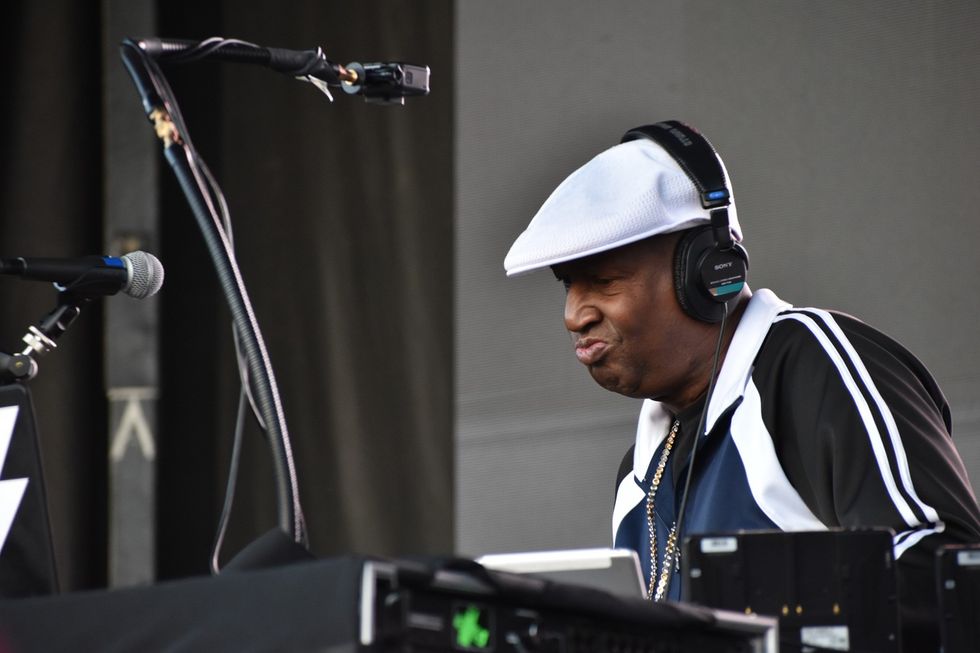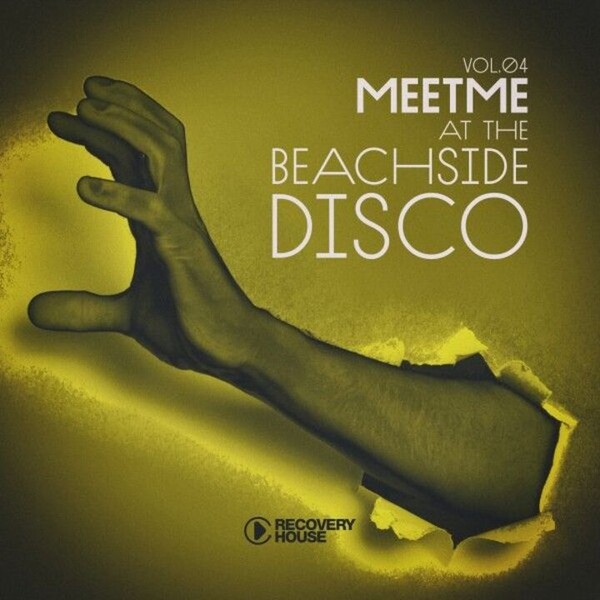For five decades, hip-hop has redefined the soundscape of American music and created a billion-dollar industry in its wake. Hip-hop as we know it has evolved way past its humble beginnings in the Bronx, where all DJs needed was vinyl and a set of turntables. While hip-hop is undoubtedly part of the foundation of African American culture, Black Caribbeans played a formative role in the genre.
In the early ‘70s, as the popularity of disco waned, through the beats of funk emerged a trove of streamlined beats that skilled DJs would innovate into hip-hop. At the time, DJs would battle each other, generating new music from existing records that resembled Jamaican dubstep music. Many of the early DJs were Afro-Caribbean, hailing from the islands of Jamaica, Trinidad, and Barbados. A Jamaican-born DJ Clive Campbell — known as
DJ Kool Herc— is credited as the founding father of hip-hop for inventing the breakbeat, a foundational sound on which hip-hop is built.

The story of hip-hop’s beginnings has been highly contested, but it begins in the Bronx on Aug. 11, 1973. DJ Kool Herc’s sister, Cindy, is hosting a back-to-school party in their apartment complex, and Herc is behind two turntables doing his signature “breakbeat” style. Herc’s breakbeat involved extending the beat of the record by using two record players, then isolating the beat and switching between the two records. Kool Herc’s parties began to grow in popularity, and thus, hip-hop was born.
The traditions of the African American, Afro-Caribbean, and the Latino communities all influenced the emerging genre. Plagued by poverty, drugs, and disenfranchisement, hip-hop reflected the socioeconomic plights of the working-class community in New York City. Many involved in the early inception of hip-hop were former gang members who turned to DJing and breakdancing as an alternative to violence. Performing in local community centers, block parties, and local clubs, hip-hop grew organically. At these parties, artists participate in clashes — competitions among partygoers — where DJs spin their best record selections to win the crowd’s approval. These clashes would soon evolve into cyphers or battle rap, where MCs and rappers would give out their best lines to gain approval from the crowd. While these competitions were usually all in good fun, they could potentially devolve into violence, but more than anything, these clashes were about celebration and camaraderie.
Outside of clubs, New York’s block parties helped give birth to hip-hop. Block parties' origins began in 1918, when New Yorkers celebrated the residents who had gone off to fight in World War I. By the 1960s, the wave of migration by Caribbean and Hispanic immigrants created block parties with their own cultural identities. Block parties powered by DJs became public gatherings that provided residents an opportunity to commune with their neighbors, share food, and engage with music in a new way. Exposed to a mass crowd, DJs were able to use their creativity to test audiences' reactions to how they fused old genres into new and cultivate a new form of creative expression. Block parties have become a staple of Black culture; it’s no surprise that their evolution promoted the rise of hip-hop.
Fellow innovators like Grandmaster Flash (Barbados) and Kool DJ Red Alert (Antigua) were all of Caribbean descent. As hip-hop gained favor within the community, DJing, MCing, Breakdancing, and Graffiti became known as the tenets of hip-hop culture.
Along the way, as hip-hop has cemented itself in the mainstream, there have been various attempts to distance the Caribbean’s influence on hip-hop. But the emerging genre’s roots in competitive sport, reggae influence on turntables, and the reliance of MCs to hype the crowd are derived from the Jamaican “toasting” tradition. Herc and rapper Coke La Rock developed their own rapping style, which evolved from call-and-response chants to more sophisticated lyricism.

Even breakdancing, where dancers were inspired to dance in between instrumental breaks, prized competition, and creativity. The term breaking, coined in the 1970s, referred to “getting excited” or “causing a disturbance.” As DJs switched between two copies of the same record, creating “breaks,” Herc and others created an improvisational space for dancers to express themselves. There have been arguments over who cultivated the dance in its infancy between African Americans and Nuyoricans, but if we look throughout hip-hop history, both groups had their own contributions to the culture of breaking.
Graffiti has been one of the more controversial pillars of hip-hop culture. For many legendary graffiti artists, they don’t believe that hip-hop and graffiti intertwine, as graffiti art was used before hip-hop in the ‘60s as a form of protest art. But the association of graffiti art and hip-hop culture arose from graffiti artists engaging in hip-hop. While artists like Lady Pink and Cholly Rock may debate the conflation with graffiti and hip-hop, the art style would come to be understood as a visual expression of rap music in various forms of media.
Years of evolving have turned hip-hop into its own singular genre, unique within the African American community and its variations across the diaspora. But even in the mainstream, Caribbean influences still dominate hip-hop culture. Canadian rappers like Drake grew up in Toronto, a city that boasts a heavy Caribbean immigrant population, namely Jamaican. Drake is known for slipping into various dialects that suit him, particularly speaking in Jamaican patois, and using reggae and reggaeton influences within his music.
Trap music,in particular, has heavy Caribbean influences. Hip-hop duo, Ghetto Mafia, is credited with pioneering trap music in the early ‘90s. One half of the duo, Nino, is from the island of St. Croix and introduced ad-libs to the genre. Inspired by dancehall DJs, these ad-libs skyrocketed the group to fame, inspiring other artists like Young Jeezy. Executives like Jamaican-born Marlon “Big Cat” Rowe, owner of Big Cat Records, launched the career of Gucci Mane. Rapper Lil Jon, known as the “King of Crunk,” has incorporated dancehall into his own music, and rapper 21 Savage, born in London, is the product of Caribbean immigrants from Dominica and St. Vincent and the Grenadines, respectively.
21 Savage performs during the 2025 Dreamville Music Festival at Dorothea Dix Park on April 05, 2025 in Raleigh, North Carolina.
Photo by Astrida Valigorsky/Getty Images. Image has been taken using a special effects filter.
As trap music has become a staple within hip-hop music, the infusion of trap and dancehall music is inevitable. Around the world, the combinations of genres have compelled audiences and music lovers to enjoy both styles of music. But this cultural exchange isn’t just one side adopting the other, as with any fusion of genres, it’s a show of mutual respect. Jamaican singer Kranium has collaborated with rappers like Ty Dolla $ign and Nigerian singers like Wizkid, which proves that there doesn’t need to be a delineation between music genres. Caribbean American artists like Nicki Minaj (who was born in the Saint James district of Port of Spain, Trinidad and Tobago), Foxy Brown (who is of both Trinidadian-American and Chinese-Trinidadian descent), and Busta Rhymes (born to Jamaican immigrants) have expertly infused their own cultures into mainstream hip-hop.
Music is the great unifier. It can connect us to people across the globe from different cultures. From Africa to the Caribbean to America, hip-hop is a multicultural genre whose roots in the African and Caribbean traditions gave rise to the MC, or rapper, and through the art of turntable mixing, emerged prominent producers. Hip-hop has come a long way from the old school raps that ruled the 70s and 80s to the current mainstream rap that blends various genres like pop, jazz, and rock. Despite hip-hop’s roots in African American culture, the Caribbean tradition endures and proves music is a multicultural effort, tying us together through immigrant histories across the diaspora.

 3 hours ago
4
3 hours ago
4



















 English (US) ·
English (US) ·